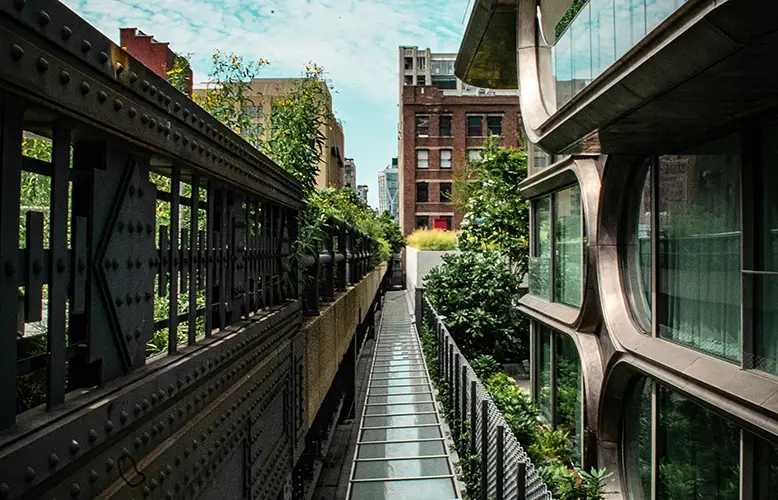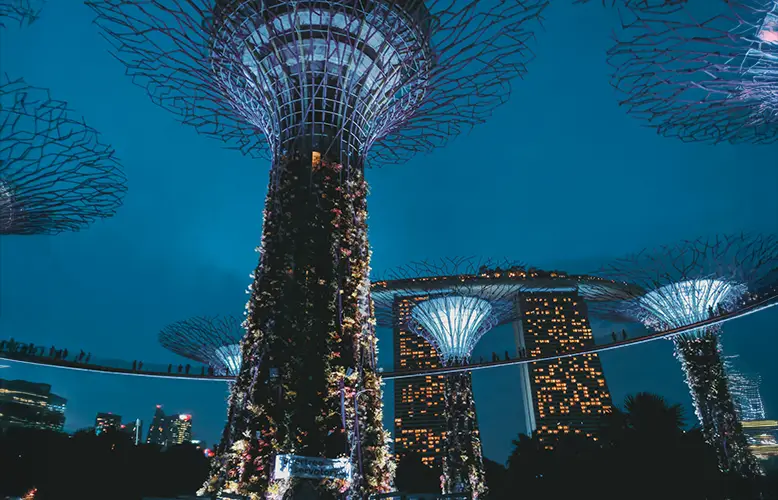The modern city can be an overwhelming experience. We navigate through canyons of steel and glass, surrounded by the constant hum of traffic and a sea of anonymous faces. This relentless environment can lead to a sense of urban fatigue, a deep-seated craving for the tranquility of nature that feels miles away. But what if the solution isn’t to escape the city, but to find the hidden pockets of wilderness growing within it? Across the globe, a quiet revolution is underway as cities transform forgotten and underutilized spaces into vibrant green oases, offering a powerful antidote to the concrete landscape. This is a journey into the world of urban greening, where derelict railways, forgotten rooftops, and concrete lots are being reborn as lush, living ecosystems.
The Roots of the Urban Garden Movement
The idea of growing plants in cities is not new, but its modern form is driven by a new set of urgent needs. Beyond simple beautification, today’s urban green spaces are a response to a desire for wellness, sustainability, and community connection. This movement is powered by the concept of biophilic design, an architectural approach that recognizes our innate need to connect with nature. Cities are realizing that green infrastructure can manage stormwater, reduce the urban heat island effect, and improve air quality. More importantly, these spaces create a powerful sense of place and belonging, turning anonymous urban areas into true neighborhoods.
From Rooftops to Railways: The New Green Canvases
The most exciting aspect of this green revolution is its creativity. Innovators are looking at the urban landscape not for what it is, but for what it could be. Exploring these urban trails, from repurposed railways to sky-high farms, is best done unencumbered. Finding cheap luggage storage can free up your entire day to wander through these diverse and often sprawling projects without being weighed down.
The High Line Effect

Perhaps no project better captures this spirit than The High Line in New York City. Once an abandoned elevated freight rail line, it was saved from demolition and transformed into a 1.45-mile-long park floating above the streets of Manhattan. Walking The High Line is a unique experience; you are simultaneously immersed in a carefully curated landscape of wild grasses and perennial flowers while being surrounded by the iconic architecture of the city. This world-famous park has inspired dozens of similar projects globally, from the 606 in Chicago to the Coulée Verte René-Dumont in Paris, proving that industrial relics can become beautiful green corridors.
Rooftop Havens
Another frontier for urban greening is the cityscape’s “fifth facade”—its rooftops. In cities where ground-level space is impossibly expensive, pioneers are looking up. Rooftop farms have become a common sight, from sprawling commercial operations like Brooklyn Grange in New York, which grows over 100,000 lbs of organic produce each year, to smaller restaurant-owned gardens. These havens do more than just grow food; they create biodiverse habitats for pollinators, insulate buildings to reduce energy costs, and offer stunning views and event spaces. In Singapore, the government actively promotes rooftop farming as a key part of its “30 by 30” goal to produce 30% of its nutritional needs locally by 2030.
Asia’s Vertical Forests and Super trees

While some cities build on top of old infrastructure, others are integrating nature directly into their futuristic visions. The most spectacular examples can be found in Asia, where density and technology have merged to create breathtaking green structures. Singapore’s Gardens by the Bay is a must-see, dominated by its iconic Supertree Grove. These massive, tree-shaped vertical gardens, ranging from 25 to 50 meters tall, are not just sculptures; they are complex ecosystems that harvest solar energy, collect rainwater, and serve as air-venting ducts for the park’s conservatories.
This concept of vertical greening has spread worldwide. In Milan, the Bosco Verticale (Vertical Forest) consists of two residential towers housing over 900 trees and thousands of shrubs and plants. This “tower of trees” creates a microclimate, producing oxygen and absorbing dust particles while providing residents with a living, breathing facade that changes with the seasons. It’s a powerful statement about how high-density living can coexist with, and even support, nature.
Community Gardens as Social Hubs
Not all urban greening projects are grand, top-down initiatives. The heart of the movement often lies in small, community-run gardens that transform vacant lots into productive and social spaces. These gardens are about food security and social cohesion. In Berlin, the Prinzessinnengarten at Moritzplatz turned a desolate patch of land into a vibrant, mobile urban farm where locals gather to grow organic vegetables, learn about sustainable agriculture, and simply connect with their neighbors.
These spaces often have a unique, eclectic charm:
- Plants grow in repurposed containers like rice sacks, plastic crates, and old bathtubs.
- They often host small cafes, workshops, and local markets.
These grassroots projects empower residents to take ownership of their environment. They become outdoor classrooms for children, a source of fresh produce for families, and a vital defense against loneliness in an increasingly isolated world. They are living proof that even the smallest patch of green can have a monumental impact on a community’s well-being.





